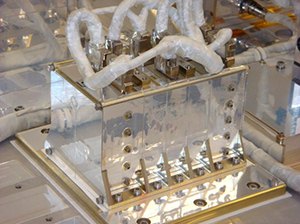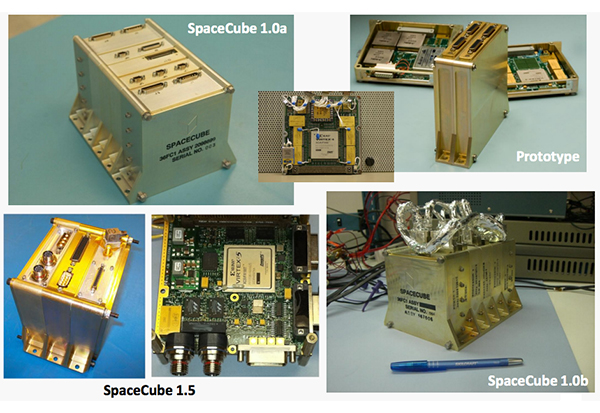With the help of reliability engineers, the SpaceCube team has designed a high-performance system with the potential to benefit many future missions.
SpaceCube is a reconfigurable, hybrid data processing system designed for spaceflight by the engineers at Goddard Space Flight Center (GSFC). It is currently being used on the International Space Station for testing radiation upset mitigation techniques, streaming live high-definition images of Earth, controlling and processing data from scientific sensors and a variety of other on-orbit experiments.

SpaceCube From Materials International
Space Station Experiments 7 and 8
This versatile, multiple-processor computer is based on field-programmable gate arrays (FPGAs) and is 10 to 100 times more powerful than current state-of-the-art radiation hardened space processors.
SpaceCube’s processing power stems from its ability to do data-processing steps in parallel using FPGAs, whereas standard sequential systems process steps one at a time. SpaceCube can capture a large amount of data, process it and generate products that allow users to operate advanced instruments and complete real-time tasks. It is capable of supporting applications such as onboard autonomous decision-making and robotic maneuvers, both of which will be crucial capabilities for future missions.
There are currently three SpaceCubes on the International Space Station, and the team is planning to send three more within the next year. To ensure they are functional for the duration of their missions, reliability personnel provided key input into the design.
Reliability engineers were introduced to the SpaceCube project about a year after its initial development in 2005. In addition to verifying parts selection and completing analysis studies, reliability personnel encountered unique challenges to SpaceCube’s reliability assurance. Because its parts were more advanced than traditional spaceflight hardware, NASA reliability standards did not support them.

Current Versions of Spacecube
“We worked with reliability personnel on how to blaze a trail for this type of part [referring to the Xilinx Virtex-5 FPGA] and circuit board complexity,” said GSFC Embedded Systems Group Leader and SpaceCube Technical Manager Dave Petrick.
“The circuit board is extremely complex due to the back-to-back mounting of the FPGAs, which have more than 1700 tightly packed pins. This makes the board design a lot harder to meet NASA’s standard spaceflight specifications.”
The SpaceCube team at GFSC worked with Reliability experts to design a board that is both functional and reliable. The team is working on writing an addendum for the NASA standard to support SpaceCube’s board and other parts of similar complexity.
“Before Reliability and Quality Assurance personnel were brought onboard, it was just a standard skunkworks lab project,” said Petrick. “It was a bunch of engineers getting together in a lab and making it work.”
With the help of the reliability personnel, the SpaceCube team built a Class 3A board, the highest classification in spaceflight manufacturing. Now, the team now is looking at commercializing SpaceCube. Other future plans include a new version, SpaceCube 3.0, which will augment the existing suite of 1.0, 2.0 and SpaceCube Mini. The team anticipates that SpaceCube will be an invaluable asset to NASA’s upcoming “next-generation” missions that will require order-of-magnitude improvements in on-board processing power to meet their mission goals.
“NASA’s Science Technology Mission Directorate is talking about the cool things they want to do a decade out,” said Petrick. “All [of those missions] require data processing technology that is well above and beyond the current processing capability that is out there for space. SpaceCube is a mission-enabling technology for everything NASA is talking about wanting to do.”